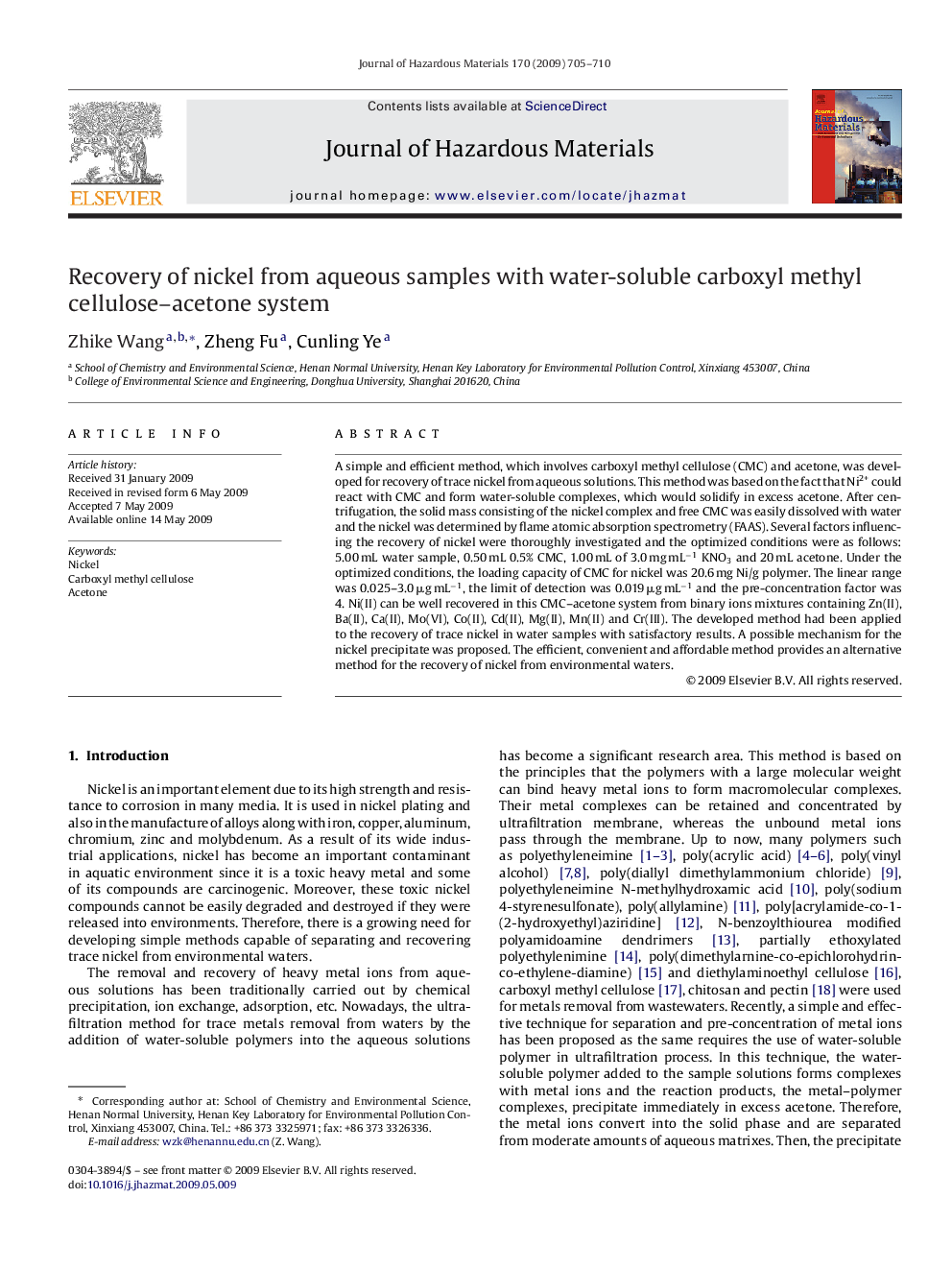| Article ID | Journal | Published Year | Pages | File Type |
|---|---|---|---|---|
| 581224 | Journal of Hazardous Materials | 2009 | 6 Pages |
Abstract
A simple and efficient method, which involves carboxyl methyl cellulose (CMC) and acetone, was developed for recovery of trace nickel from aqueous solutions. This method was based on the fact that Ni2+ could react with CMC and form water-soluble complexes, which would solidify in excess acetone. After centrifugation, the solid mass consisting of the nickel complex and free CMC was easily dissolved with water and the nickel was determined by flame atomic absorption spectrometry (FAAS). Several factors influencing the recovery of nickel were thoroughly investigated and the optimized conditions were as follows: 5.00 mL water sample, 0.50 mL 0.5% CMC, 1.00 mL of 3.0 mg mLâ1 KNO3 and 20 mL acetone. Under the optimized conditions, the loading capacity of CMC for nickel was 20.6 mg Ni/g polymer. The linear range was 0.025-3.0 μg mLâ1, the limit of detection was 0.019 μg mLâ1 and the pre-concentration factor was 4. Ni(II) can be well recovered in this CMC-acetone system from binary ions mixtures containing Zn(II), Ba(II), Ca(II), Mo(VI), Co(II), Cd(II), Mg(II), Mn(II) and Cr(III). The developed method had been applied to the recovery of trace nickel in water samples with satisfactory results. A possible mechanism for the nickel precipitate was proposed. The efficient, convenient and affordable method provides an alternative method for the recovery of nickel from environmental waters.
Related Topics
Physical Sciences and Engineering
Chemical Engineering
Chemical Health and Safety
Authors
Zhike Wang, Zheng Fu, Cunling Ye,
